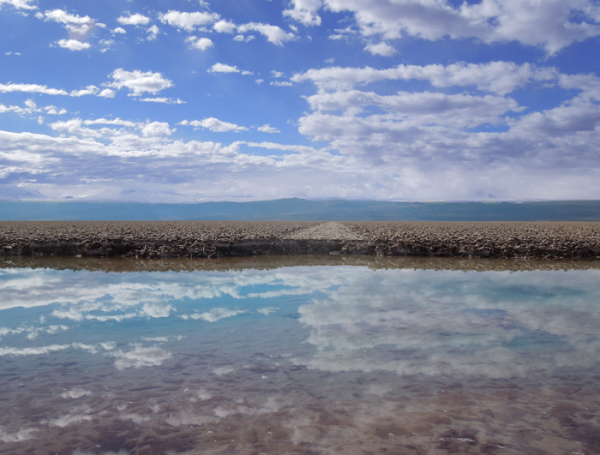A groundbreaking new study recently published in the journal Earth’s Future and led by researchers at the University of Massachusetts Amherst in collaboration with the University of Alaska Anchorage, is the first to comprehensively account for the hydrological impact of lithium mining. Since lithium is the key component of the lithium-ion batteries that are crucial for the transition away from fossil fuels and towards green energy, it is critical to fully understand how to responsibly obtain the precious element.
Previous studies have not addressed two of the most important factors in determining whether lithium is obtained responsibly: the age and source of the water the lithium is found in. This first-of-its-kind study is the result of more than a decade of research, and it suggests that total water usage in the Salar de Atacama is exceeding its resupply—though, as the team also points out, the impact of lithium mining itself is comparatively small. Lithium mining accounts for less than 10% of freshwater usage and its brine extraction does not correlate with changes in either surface-water features or basin-water storage.
Lithium, says David Boutt, professor of geosciences at UMass Amherst and one of the paper’s co-authors, is a strange element. It’s the lightest of the metals, but it doesn’t like to be in a solid form. Lithium tends to occur in layers of volcanic ash, but it reacts quickly with water. When rain or snowmelt moves through the ash layers, lithium leaches into the groundwater, moving downhill until it settles in a flat basin where it remains in solution as a briny mix of water and lithium. Because this brine is very dense, it often settles beneath pockets of fresh surface water, which float on top of the lithium-rich fluid below. These fresh-water lagoons often become havens for unique and fragile ecosystems and iconic species such as flamingos.
Read more at: University of Massachusetts Amherst
An abandoned road and brine Transitional Pool at the margin of the Salar de Atacama Halite Nucleus (Photo Credit: UMass Amherst)


